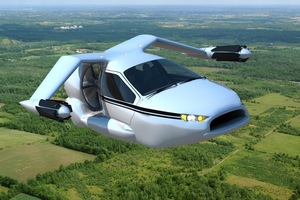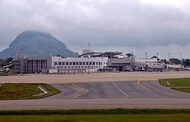Flying Cars Have Arrived. So What?
You’ll never own one, but that doesn’t mean they aren’t cool.
Just because one particular Jetsons-inspired fantasy will never come to be, doesn’t mean that flying cars like the Pal-V are nothing more than playthings for one-percenters.
This week, Dutch company Pal-V announced it was putting its much-ballyhooed flying car on sale. The Pal-V is actually more of a flying three-wheeled motorcycle than a flying car, but the point is it’s a street-legal vehicle than can become airborne. So if you happen to have a spare $300,000 and 30 hours to devote to earning your sport pilot license, you too can enjoy the flying car of the future now.
The cost of the Pal-V may prove prohibitive for the average consumer, but that’s okay, because the average consumer doesn’t need a flying car, nor should they want one. Despite what we like to imagine about flying cars freeing up traffic and lifting the smog away from our fruited plains, and despite what films like Blade Runner, Back to the Future, and Chitty Chitty Bang Bang portrayed, airborne automobiles are not a practical means of transportation.
 TFX
TFX
The Terrafugia TF-X: The other flying car that may actually make it to production.
The reasons for this should be fairly obvious, if you simply imagine even a fraction of the five million annual car crashes (in the United States alone, according to the U.S. Department of Transportation) occurring overhead, possibly resulting in debris raining down on whatever is unlcky enough to be near the flight path.
In 2011, there were nearly 5,000 near misses among airplanes, according to the Federal Aviation Administration (F.A.A.). If 5,000 trained pilots, guided by an air traffic control system and some of the most advanced technology available come close to crashing nearly 5,000 times in one year, how do you suppose the average driver (who has yet to master piloting a vehicle in two dimensions, let alone three) will do?
But just because one particular Jetsons-inspired fantasy will never come to be, doesn’t mean that flying cars like the Pal-V are nothing more than playthings for one-percenters.
It’s easy to see potential uses for such a vehicle for medevac purposes, for instance, although none of the currently developed flying cars are roomy enough. The most likely application, as with most new technologies, is probably military. A vehicle that can drive over multiple terrains as well as fly would obviously be useful in battle, as well as in search-and-rescue missions.
Whether or not anyone will have a flying car parked in front of their house (or space dome, if you prefer) sometime in the vast, unknowable future, flying cars remain an idea worth pursuing if only because … well because they’re really quite spectacularly cool.














